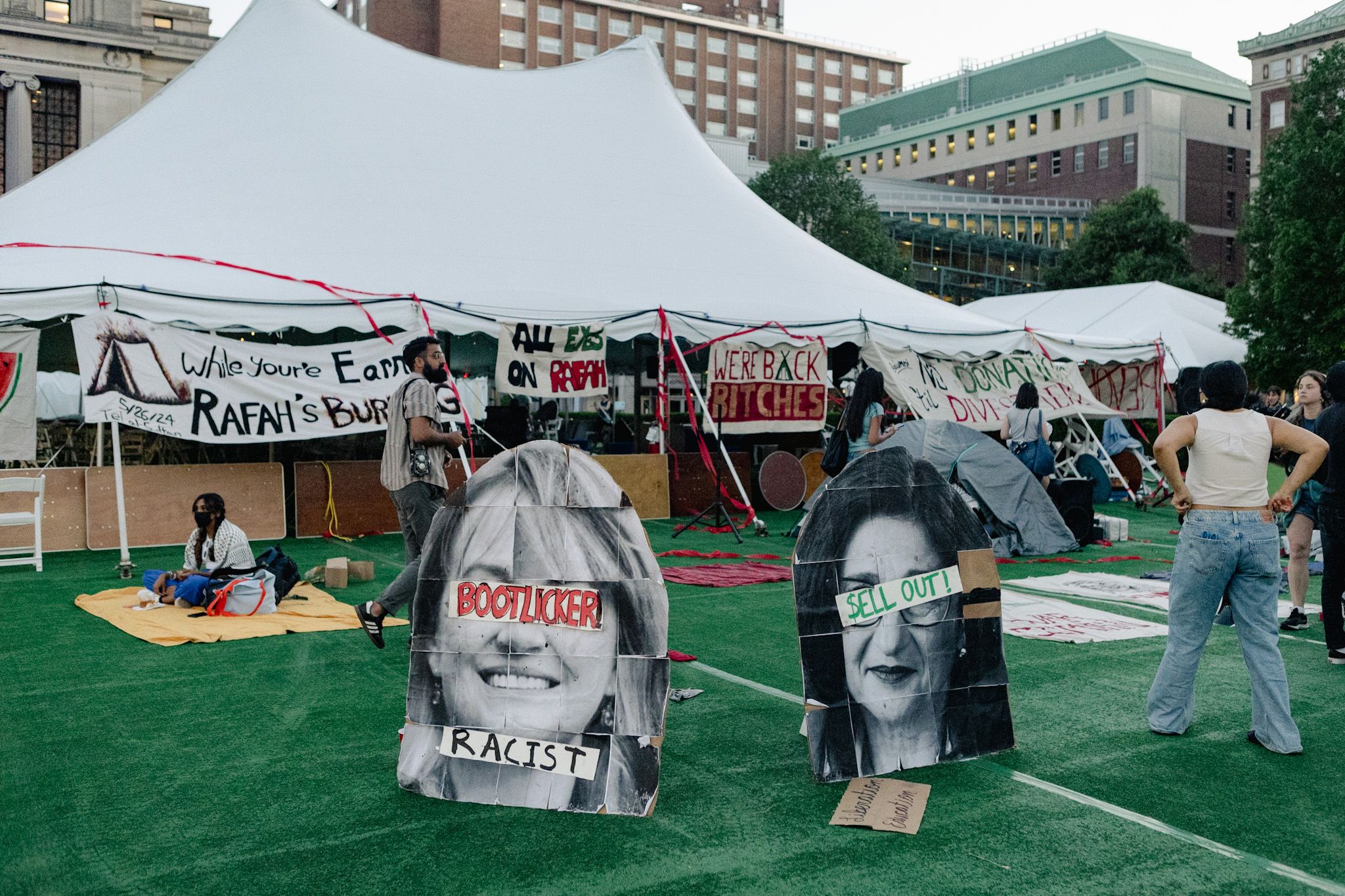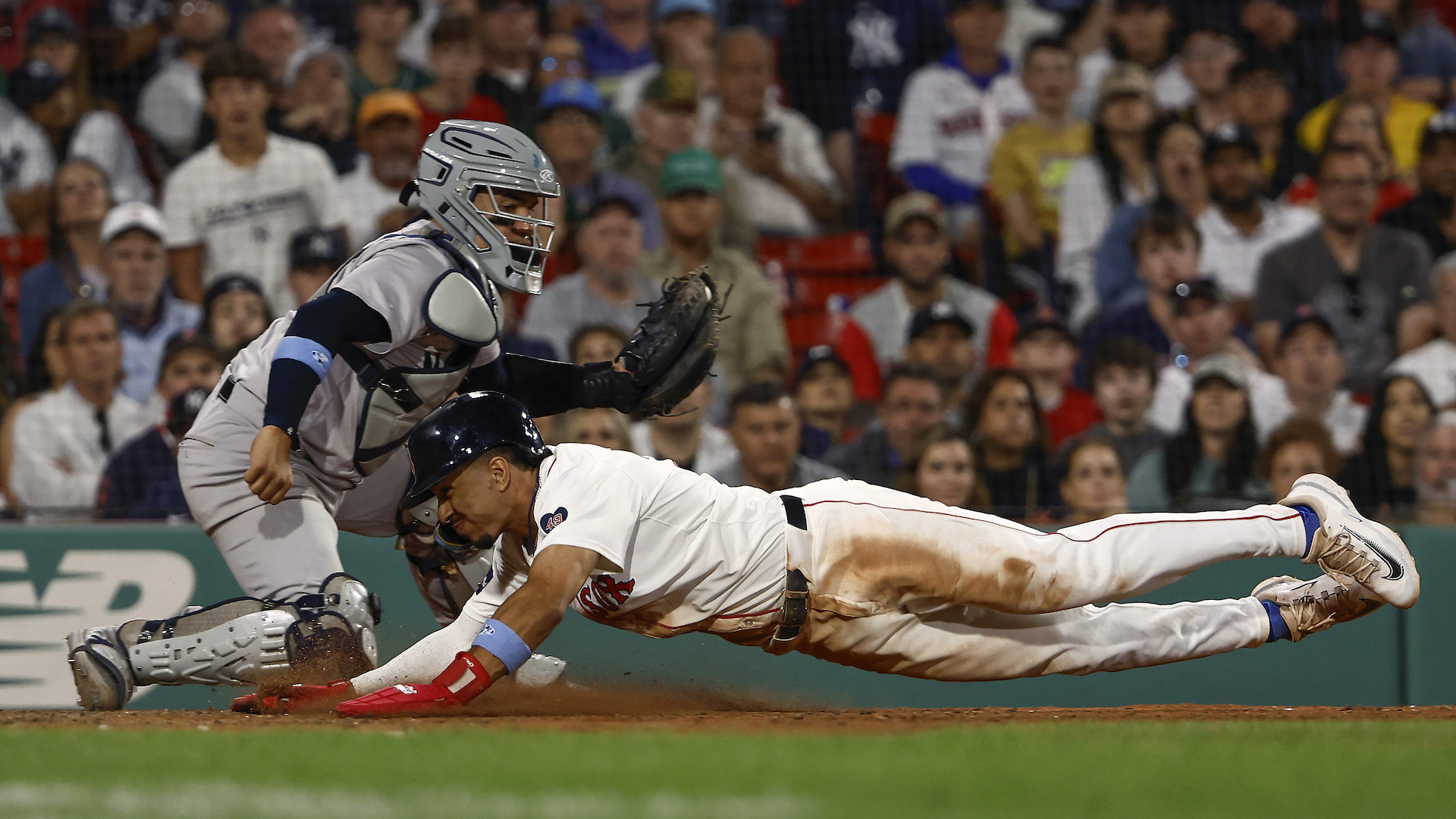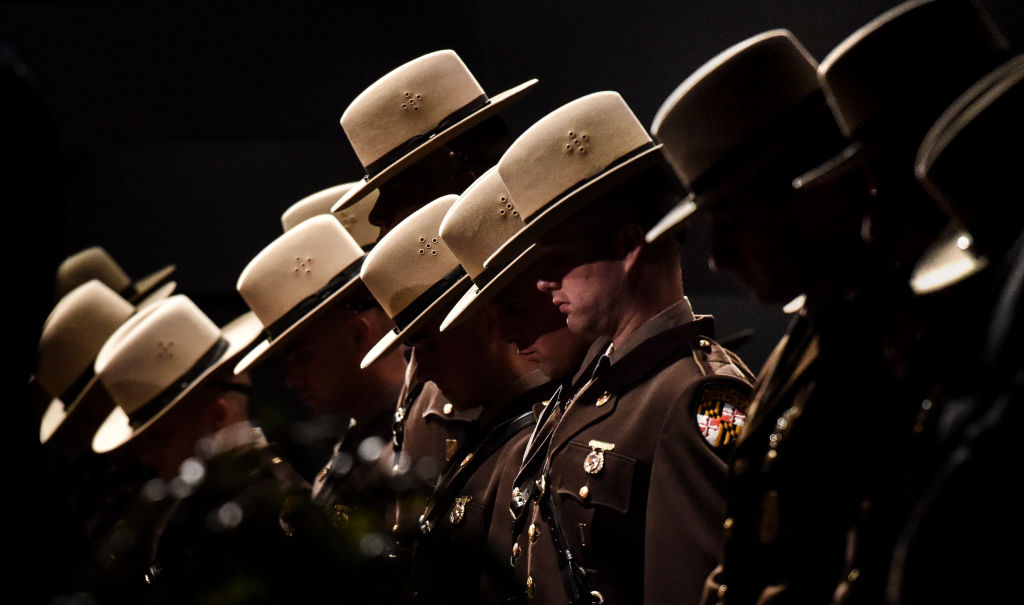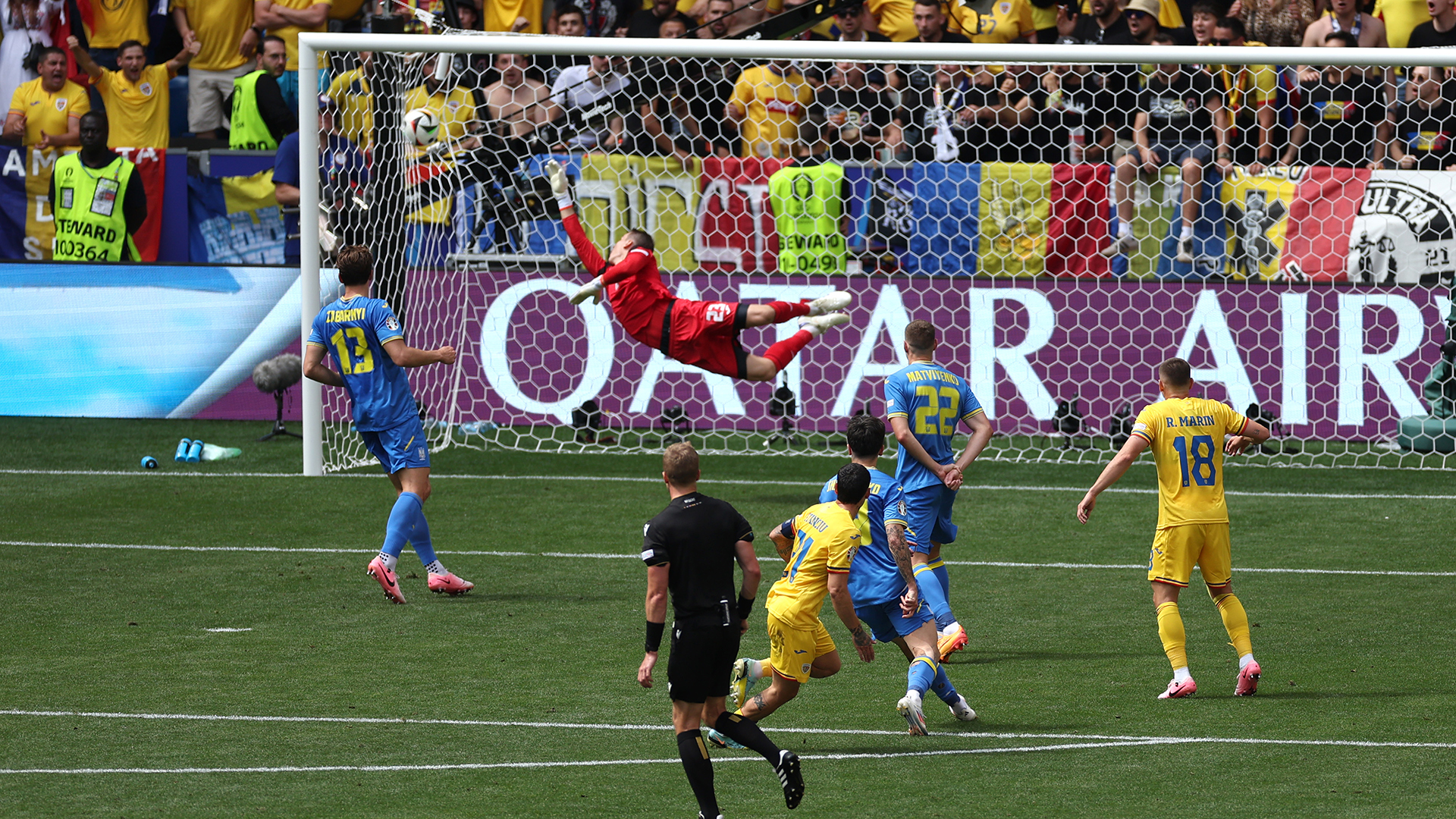COLUMBIA UNIVERSITY — I started this month by waking up in a field of turf. I had spent the entire night sleeping rigidly on the ground—a decision I had made with a mind completely clear and sober. It was, in hindsight, a terrible choice.
The turf was worse than the kind that tore up Aaron Rodgers’s Achilles tendon. It was hard and uncomfortable with absolutely no filler, and each roll of scratchy, synthetic green grass had been laid over these white plastic panels, which occasionally crunched like broken bones beneath your feet.
It was a Saturday morning, and while I usually prefer to sleep in on the weekends, the heat of the sun searing my skin woke me up before 8:00 a.m. Birds had started chirping from nearby trees around, I think, 5:00 a.m., so I had only really been half-asleep for the past three hours. Around me, other members of the student press were beginning to rise. Like me, they had also opted to sleep on the ground.
We weren’t on any sort of athletic field, but rather the lawn in front of Columbia’s library, where a few dozen pro-Palestine protestors had set up a third encampment for Columbia’s alumni weekend. At the new encampment, despite its placement on the graveyard of the “Liberation Zone” which came before, the ground was unfamiliar. Gone were the ghostly patches of yellow grass, marking where a village of tents had sat before. In its place, the university had rolled out a carpet of plasticky green turf. Garish in its color and flawless in its uniformity, it was as if the school was trying its very best to conceal what had germinated in that very space just a month ago.
A few minutes past midnight on April 30, an autonomous group of Columbia students took over Hamilton Hall—a building which houses classrooms, the Admissions office, and various other administrative departments. When their barricades had been set and windows papered over, the protestors emerged with a banner and rechristened the historic building as “Hind’s Hall,” named in honor of the 6-year-old Palestinian girl who was killed in Gaza by the Israeli military on Jan. 29. The takeover was an escalation after two weeks of continuous demands from a coalition on Columbia’s campus asking for the university to divest from its ties to Israel.
As the sun began to rise over Columbia’s campus on the dawn of the building occupation, I was sitting on the pier of a fence outside of Hamilton, packing up my camera equipment. My head was spinning, and it wasn’t just due to my lack of sleep. Just hours before, the steps in front of Hamilton had been chaos: rows of students locked arm in arm, broken glass littering the ground by the rightmost door, painted banners dropped from the ledges of windows, the repeated echo of a megaphone into a brisk night.
It was roughly a quarter past 6:00 a.m., which meant that my photography shift for the Columbia Daily Spectator, the student newspaper, was coming to an end. With a few other student writers and copy editors, I headed back to Butler Library, where I had left the rest of my belongings. During the school year, Columbia’s flagship library is open 24/7, and with its proximity to the encampment set up by student protestors, Butler had become a satellite office of sorts for the Spectator, each of us dashing in and out at all hours of the day.
As I shifted the straps of my backpack onto my shoulder, preparing to head out of the reading room, one of the few remaining editors stopped me.
“We can’t leave,” she said. “They just locked down the campus.”
When the news hit at 6:23 a.m. that Columbia’s main campus would be indefinitely closed to all those who did not live directly within the gates, we did a head count of the few remaining Spectator staffers. There were six of us in the library, and for the time being, I was the only photographer remaining.
Hours later, Jelani Cobb, the journalism school dean, would personally escort four other Spectator staffers inside the gates, one of whom was a photographer. We would switch places so I could head back to my dorm off campus. But at 7:00 a.m., everything was uncertain, so I decided I would do my best and try to get some rest.
There’s a picture of me in the May 6-19 edition of New York magazine sleeping on a table in Butler Library. The lights are on, and I’m curled in a fetal position, completely passed out. I didn’t even know that this picture existed right up until someone asked me for permission to put it in the article. What I do remember is the dread that crept through me as I settled onto that library desk—feeling like I could not leave campus, mostly for the fear of being unable to come back.
It’s that dread which made student reporters think twice about leaving campus again on May 31, as the third Columbia encampment established its ground. While protestors rushed around the lawn, setting up tents and dragging around tables and chairs to use as barricades, we stood to the side, witnessing it all. At one point, a drone hovered around 15 feet over my head, surveilling the scene and undoubtedly capturing faces. I pointed my camera toward it and snapped a picture.
When the sun went down, all the journalists—WKCR’s radio broadcasters, journalism school documentary teams, my Spectator colleagues—huddled around trays of leftover charcuterie boards that someone had snagged from one of the evening alumni events. We foraged like rats. None of us wanted to go, wary of the threat that our ID cards might be deactivated before we could return to the encampment.
Looking back, I think the correct choice would have been to steal some sleep in my tiny apartment just a few blocks down, then get up early in the morning to go back to campus. The encampment itself would disband on its own just two days later, and the university didn’t escalate its response beyond an attempted sweep by public safety officers around 8:00 p.m. on the first night.
But a little part of each of us was still trapped on April 30—cornered by riot police, watching as students got thrown down stairs or dragged away in handcuffs. The university had already proven before that it would physically suppress journalists in order to limit knowledge and reporting of its actions, and it certainly had no qualms about closing its gates to its own community.
Barely a month later, we made a decision with the recent past in mind. At first, we considered pulling an all-nighter. I sifted through photos as another photographer sat next to me with her computer open, editing. In the corner of the camp, they were playing a documentary about the Great March of Return. I glanced over at one point—“Everywhere you look there’s suffering,” a subtitle read.
At some time around 2:00 a.m., the bid for sleeplessness was abandoned. In an area of the lawn we had deemed “the press corner,” I laid down on the ground and closed my eyes. It was unexpectedly cold that night, and the air kept biting at my ankles and my hands. At one point, I did the little-kid-thing of sticking my arms inside my shirt in an effort to get warmer. Somehow, this was so much worse than sleeping on a desk. Next to me, other student reporters seemed just as restless. But nobody left. The one thing more uncomfortable than sleeping on the turf was the idea of what would happen if none of us were there to bear witness. Perhaps it’s a naive overestimation of our own importance, but when the mainstream media vans drive away for the next news clip, it’s us who remain on this campus.
When I think back to that night on the lawn, I'm also reminded of the student journalists at The Dartmouth arrested while doing their jobs. I remember the Daily Bruin reporters brutalized alongside their peers in the UCLA encampment, attacked mercilessly by counter-protesters as law enforcement stood idly by. Sleeping on the ground or on a table is an incredibly small ask when so many journalists have endured an incomparable amount of suffering. As of today, the Committee to Protect Journalists reports that 108 journalists have been killed since the war in Gaza started, a number that will only grow as they continue to review cases.
In the early hours of the third encampment, another photographer said to me that it smelled like something was dying beneath us. “Probably the real grass,” she said. The turf and all its layers were strangely reminiscent of how the university had decided to meet this moment with obfuscation and PR plays—white tiles cracking like the fractured image of Columbia President Minouche Shafik, who thanked the NYPD “for their incredible professionalism and support” while video footage and a stray bullet said otherwise. When the gates had been locked to all but those at the very top, they rolled out their green carpet, as if weeks of broken trust and failed negotiations could be hidden under the veneer of something unnaturally indestructible. But, eventually, the turf must be removed. The students will return. And from the decay beneath, the grass will grow again.





